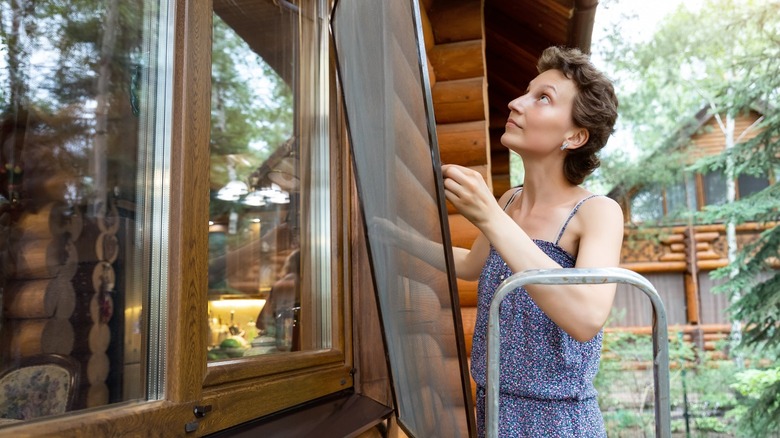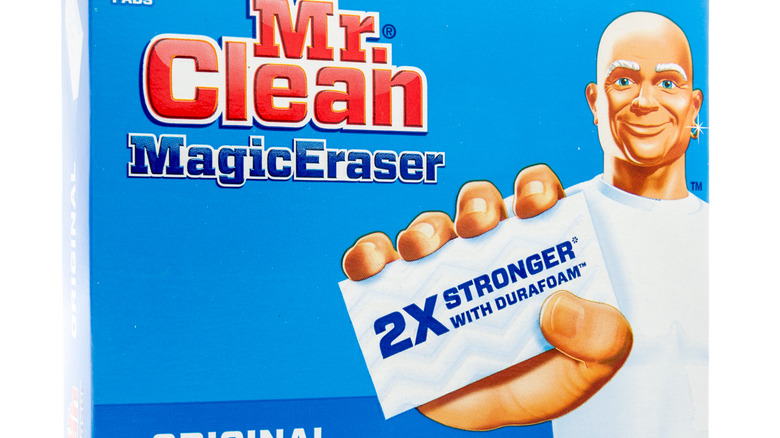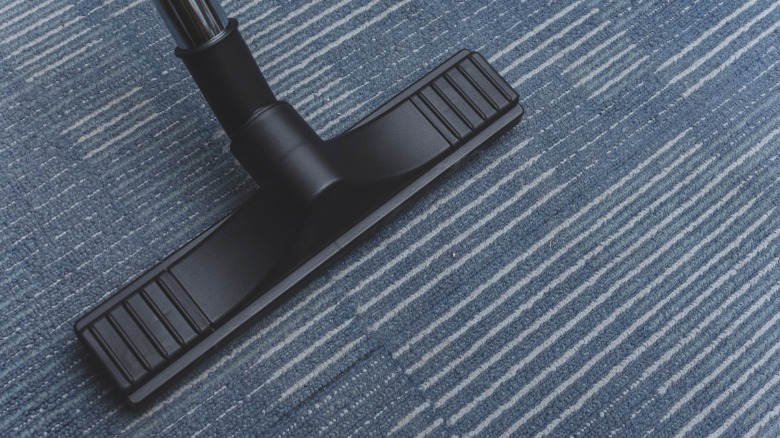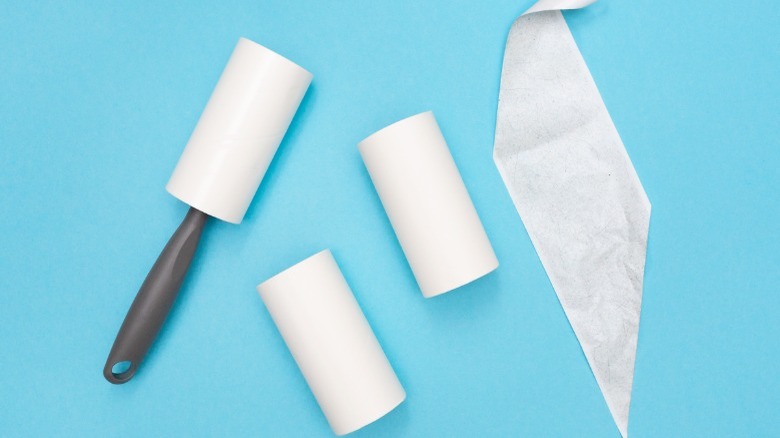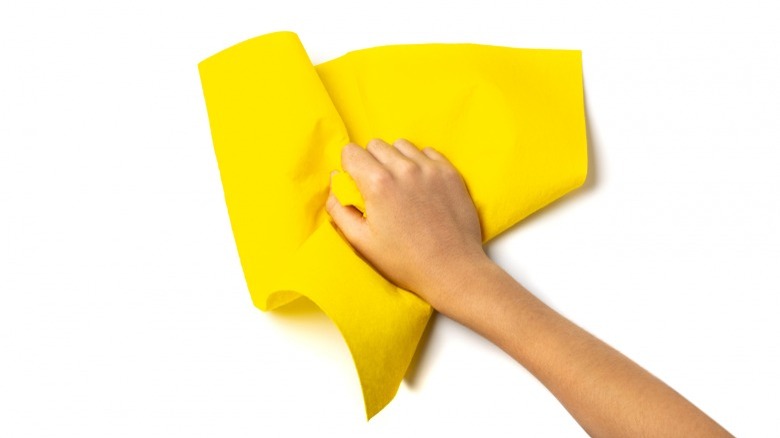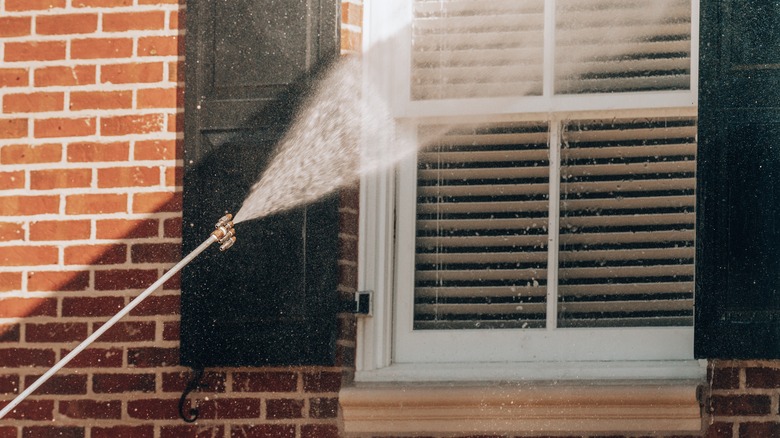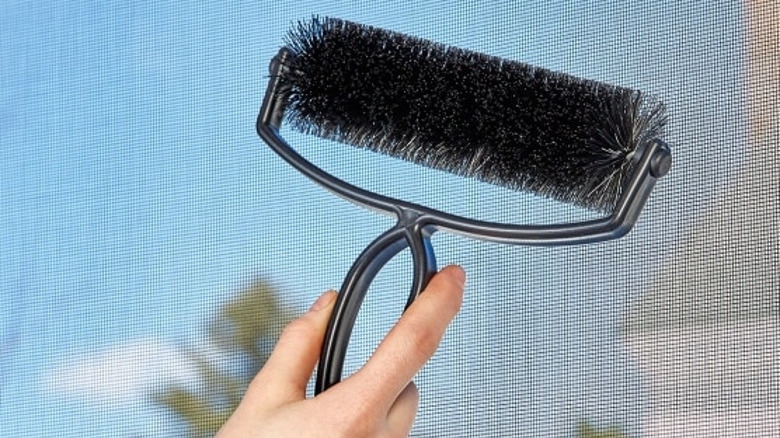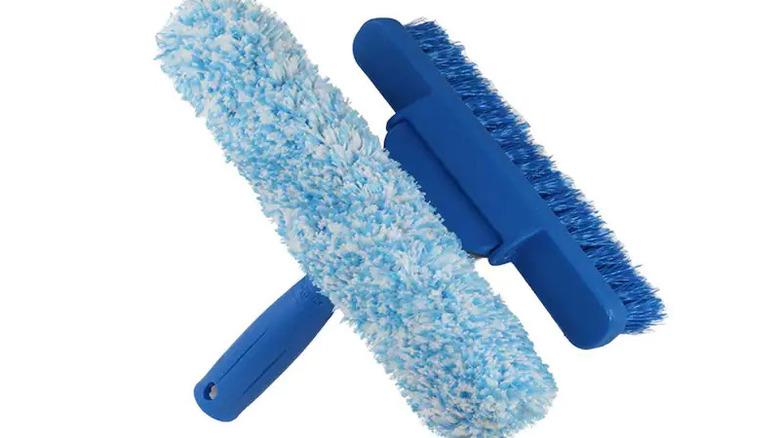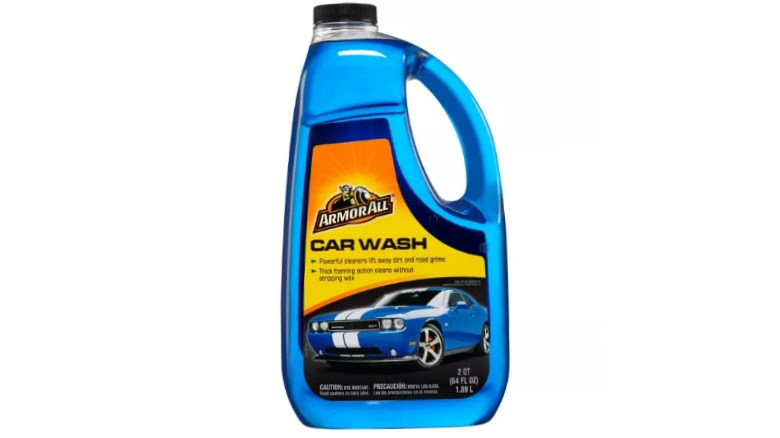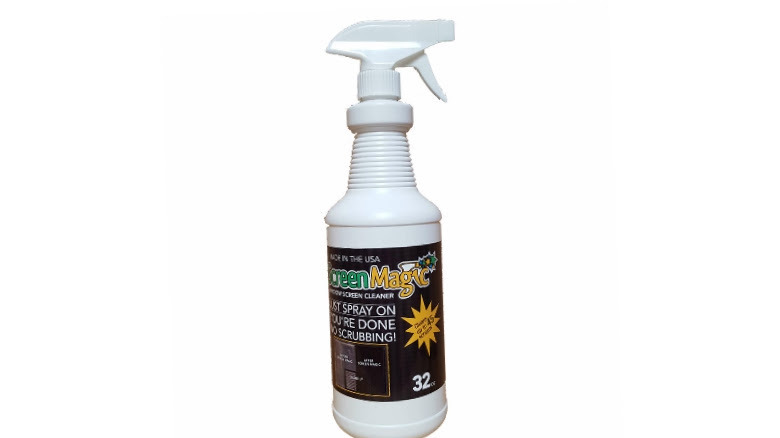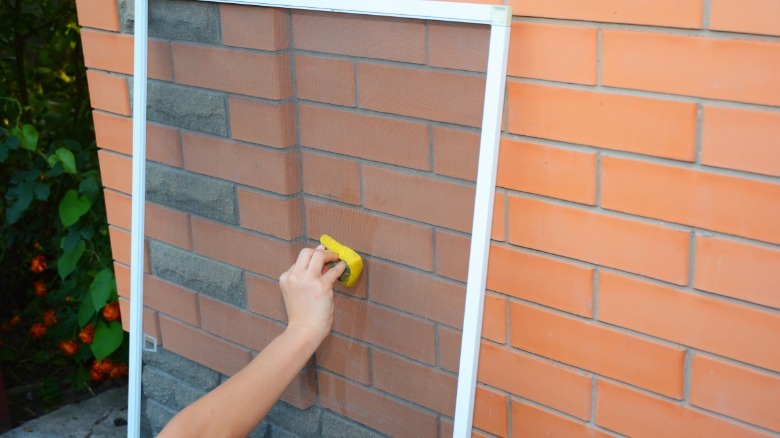How You Should Be Cleaning Your Window And Door Screens
We may receive a commission on purchases made from links.
We all know we should clean our window and door screens, but do we really understand why it's so important? According to Window Genie, the air quality in our homes is one big reason. When weather permits, it's nice to open the windows and doors and allow fresh air to blow through the house. But screens become dirty and clogged with all kinds of pollutants, which can come inside your home. When indoor air quality is compromised, sinus problems, respiratory issues, and allergies are often experienced.
Additionally, your windows themselves will become dirtier, especially when the rainfall comes through grimey window screens. Your screen's lifespan can also become compromised by holding onto salts, dirt, pollen, and insects. The fact is, the more you clean your door and window screens, the longer they will last, and the better your house will look. So what's the best way to wash them? Here are some of the best methods.
The Magic Eraser method
The first method for cleaning your screens is using a Magic Eraser. Have you ever wondered what these versatile sponge-shaped curiosities are made out of? They're comprised of a type of melamine resin foam, compacted into an ultra-light piece of quilted material. Amazingly, there are no added chemicals added. The foam does all the work.
All you have to do is add a little bit of water to the Magic Eraser, and the triangular ridges on the sponge help get rid of dirt and grime. They "catch" on particles and will make short work of cleaning your window and door screens. Just dampen the Magic Eraser with clean water and scrub the screen on both sides. If you choose the extra-strength version, it can better handle scrubbing on the rough surface of the screen without falling apart. Plus, you can use this method while the screens are still attached to the windows. It's a simple, effective way to clean window and door screens.
Use your vacuum cleaner
Moving on to our next method, you can easily clean screens using your vacuum cleaner and one of its attachments, as per Zephyr Thomas Home Improvement. This is another method where you won't have to remove the screen from the window. The first step is to dust the screens thoroughly using the soft brush attachment of your vacuum cleaner. After, vacuum up the fallen debris and dust from the floor around the windows. Since the next step involves liquid, it's important at this point to lay something down, like a tarp or a towel.
Now you'll need two buckets, one for washing and one for rinsing. In the wash bucket, use a small amount of mild dish soap and warm water. In the rinse bucket, add warm water. You'll also need a clean, lint-free rag to dip into the mild cleaning solution and wring out so it's left damp. Rinse often, and scrub lightly until clean. When rinsing, be sure that the cloth and water remain clean. If they get dirty, swap them for clean versions. Afterward, let the screens air dry.
Use a lint roller
Do you have a screened-in patio or a screen door that's a hassle to remove? Or maybe you have a ton of window screens but not a lot of time? This is a quick but efficient way to clean all your screens without ever having to take them down. It's perfect when you're having company at the last minute and need to cut corners. It's also ideal if you love easy, new ways to accomplish big jobs in a snap. This trick is as ingenious as the Magic Eraser one and just about as simple.
All you'll need is a paint roller, a lint roller, and sticky sheets (via Instructables). Incidentally, you can find a package of two Scotch-Brite lint rollers and 120 sticky sheets for $5.84 at Walmart. You can also purchase a Linzer Good 9-inch metal paint roller at Walmart for $3.94. The lint rollers are removable, so you can pop them off the barrel of the lint roller and place them over the paint roller. If both of your lint rollers fit, you can use them both at the same time. They should, since the standard size is about 4 inches in length, but you can also use them individually if that's easier. Get a ladder or step stool for reaching the tops, and roll away! You'll be amazed at how clean you can get your screens to look in no time.
Use a damp microfiber cloth
According to See Jane Drill, using a microfiber cloth is the key to this method. A regular cloth rag won't work because the screen will catch on the fibers and leave little bits of it behind. You don't have to remove the screens for this, but be sure to protect the floors. If you prefer to remove the screens, ensure you're in a place that can get dirty. Outside or in a garage are usually the best options.
You don't need to use anything but warm water, and squeeze all the excess out, so the microfiber cloth is damp but not soaked. Start at the corners where the dirt is the worst, and gently wipe from side to side. Start at the top of the screen, and work your way down. Rinse the cloth as needed, and switch to a new one after each screen. Watch the dirt and grime just roll right off!
Pressure washer method
The next method on our list involves your pressure washer. We know any excuse to use it makes owners happy; however, you'll want to remove the screens for this one. Not only can you use it on the screens, but you can wash your windows with it too. If, for some reason, you can't remove your screens, you need to make sure all the weather stripping and caulking are secure. Otherwise, the water can penetrate into the house and cause damage.
Once your screens are removed, lay them down flat in the driveway. Prepare your pressure washer with water and use the white, low-pressure nozzle. According to HanDIYman, rinse the screens first with water. Then, in a pressure washer bottle, mix 1 part mild dishwashing soap, 2 parts bleach, and 6 parts water, and shake vigorously. You can also use lemon or lavender-scented bleach for a nice lingering scent when you open the windows after cleaning them.
After that, thoroughly clean the screens with the solution attached to the pressure washer, first on one side and then on the other. Rinse each side thoroughly, and stand them up for the final pass. You can either allow them to air dry or wipe them down with a dry towel to hasten the process. This is perfect when you need to give your screens a deep cleaning but don't want to work too hard to accomplish it!
Use a screen cleaning brush
Did you know there was such a thing as a special screen cleaning brush? It's true, and you can find it at Vermont Country Store for $12.95. It looks similar to a metal paint roller but a little smaller, with a special soft plastic bristle brush instead of the rolling barrel. This amazing invention makes short work of this task. Many products are similar to this on the market, but this one showcases the main features. It's about 8 inches long, and can even go into the dishwasher when you're finished.
You don't have to remove the screens first; if your screens aren't that dirty, you can just use the brush alone. It's kind of like a feather duster for your window and door screens! Just put a large towel or plastic tarp down to protect your floors, and start from the top and work your way down each screen. If you haven't cleaned them in a while, you can use warm water and a cleaning solution of your choice to dip the brush in first. In that case, you may want to use two buckets, one for rinsing and one with a cleaning solution in it. This is a quick, easy way to touch up your screens routinely, or if you're in a hurry,
Use a professional screen cleaner tool
Here's another great invention you can find at Home Depot for $13.07 to help you with the task. It's called a Professional Screen Cleaner by Unger, and it's quite unique. It has a brush side that's made to loosen the dirt on the screen, and when you flip the brush over, it has a roller meant for washing the screens clean. The roller has a removable microfiber sleeve, so you can throw it in the washing machine once you're done. You don't have to remove the screens first, either.
The really cool thing about this tool is that it has a couple of attachments that are sold separately. One is a telescopic pole that can help reach those high windows. It extends your reach from four to eight feet. Another is a water-flow pole for extra ease and cleaning power. Water flows through it with an on-and-off valve, allowing you to hose down the screen as you clean it.
Use car wash and wax for security screen doors
If you have a security screen door, this method is for you! According to SP Screens, there's a black coating on the doors' mesh, and it's even thicker than the paint on a car. The best way to clean it involves car wash and wax. Use a regular water hose to rinse first, and then use a soft cloth or a car wash mitt. You can get a 64 oz. bottle of Armor All Automotive Car Wash at Target for $4.69. Use this to clean the screen door front and back thoroughly. Use the hose to rinse both sides, and allow it to air dry.
Another tip is to not use any vinegar, lemon, or harsh chemicals on these screen doors. Additionally, don't use a vacuum, broom, or stiff brush when cleaning them. This is because any of these things can damage the coating on the security screen.
Use Screen Magic
Here's a method using an environmentally safe product. You can find Screen Magic at Ace Hardware for $9.99, or you can buy it in a larger size if you like. It's made for screens of all kinds, including sliding screen doors. It's non-toxic, not flammable, and non-reactive. In fact, if you've ever had windows and doors cleaned professionally, there's a good chance this is what they used on the screens.
Window screens should be removed unless you open the windows, as you don't use this product on the glass (via Screen Magic). A screen door can be left in place with the door open. Just place an old towel or equivalent on the ground for falling debris, and spray the entire screen from top to bottom with the product. You get excellent results by spraying just one side since 90% of the dirt is on the outside screen. But if you need to, you can do both sides. There's no need to scrub with anything or rinse it down; it dries in about 15 to 20 minutes. Wipe any excess that may get on the frames with a microfiber cloth. It's as easy as that!
Hand wash with a DIY cleaning solution
If you're really feeling ambitious and want to deep clean using a DIY cleaning solution, this method is for you. According to Angi, this method has several steps and takes about three hours to complete. First, remove your screens and rinse them off using a garden hose. Then use a soft brush attachment on the vacuum cleaner and lightly run it over them. Make a solution using 1/4 cup of white vinegar in a 1/2 gallon of warm water. Incidentally, you can also use a mild soap or all-purpose cleaner in the same proportion. Use a sponge to scrub the grime on both sides of each screen. Take your garden hose and rinse them thoroughly, standing them up for the final rinse.
If you're like many people, you may have rust on your screens. Should this be the case, after completing the above steps, pour straight white vinegar onto the rust spots and let them sit for one to two hours. Then use a brush with clean water to scrub the stains out. If that doesn't work, you c paste made from ½ cup of baking soda and 2 or 3 tablespoons of water until a paste is formed, and scrub rust stains out. Take your garden hose, rinse the screens thoroughly, and use a towel to dry them. Afterward, allow them to dry completely in the sun before replacing them. Any method you choose, clean your screens about once a month.
